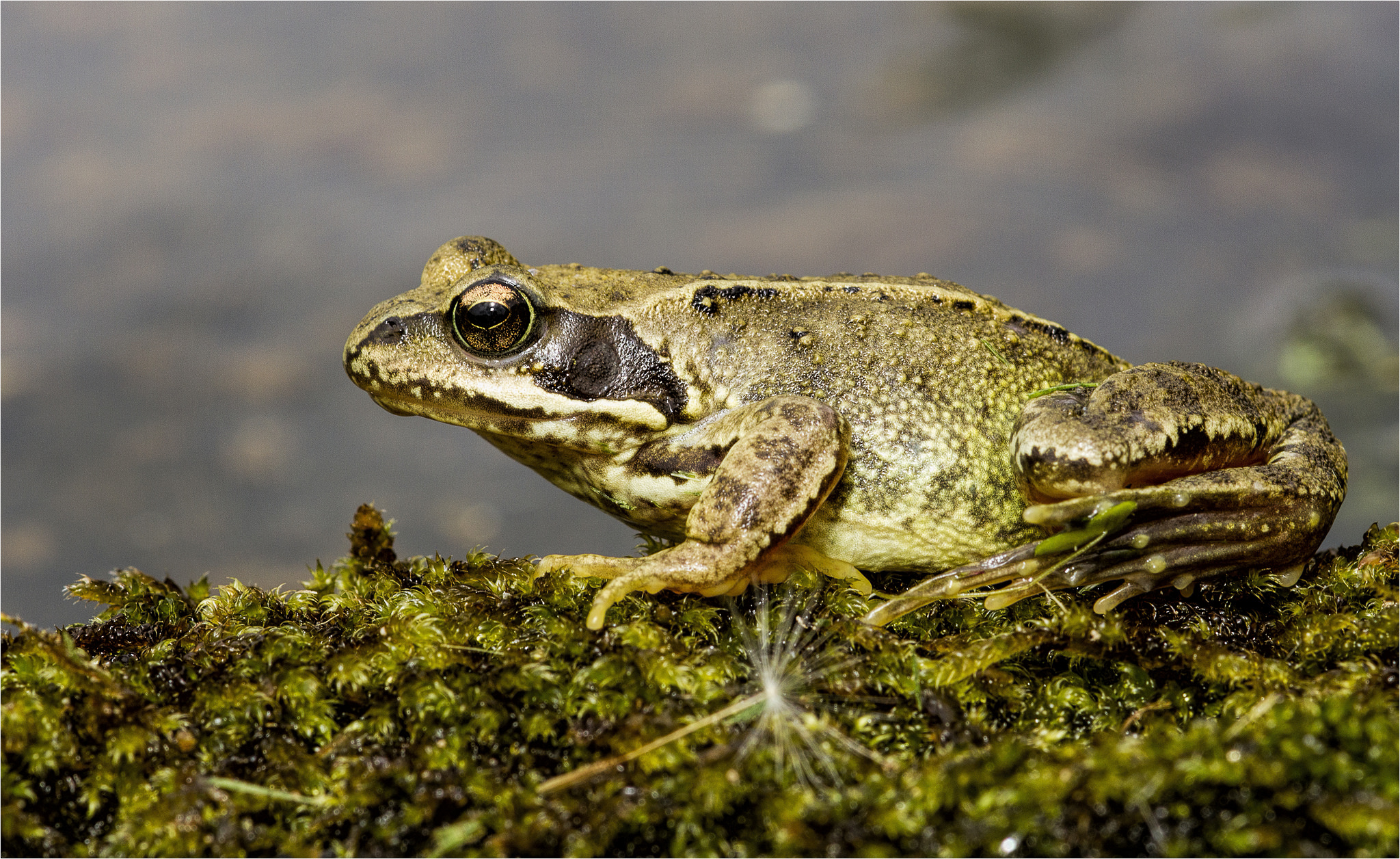Hopping Mad- Common Frog
Latin name: Rana temporaria
The common frog is a semi-aquatic amphibian found across nearly all of Europe, with its range extending into Asia, as far as Japan. They are found throughout the British Isles, although it is thought that they may have accidentally introduced there.
An average adult frog measures approximately 6-9 centimetres long and weighs about 23 grams. The skin usually has an olive green colouration, although it has been observed that frogs can alter their hue to a lighter or darker shade in order to expertly blend in with their surrounding environment. During breeding season, male frogs can often transform their skin to a blueish-grey colouration.
A frogs ideal habitat is in a moist, damp environment, such as close to ponds, marshes or lakes where there is long grass available. They often live a solitary life until breeding season approaches. In warmer climates, frogs are often active for the entirety of the year, only hibernating in exceptionally cold weather. In the British Isles, frogs often hibernate annually between the months of October and January, sometimes February. Upon emergence from hibernation, frogs tend to migrate to the nearest body of water in order to spawn.
Mating season takes place in spring and is often initiated by the ensuing rainfall and increase in day length. Such changes instigate stimulation in the frogs pituitary gland, leading to the production of sex cells in both sexes. Breeding commences in shallow and still freshwater, such as ponds. Males compete with one another for the affections of females by producing a chorus of croaks. The females choose the male with the loudest and largest croak, who then fertilises her eggs as she lays them. After fertilisation, the male and female separate, with the male attempting to find further mates.
The eggs later develop into tadpoles, with the rate of this development of frogs offspring often dictated and determined by temperature, with higher temperatures often favoured over lower ones. Tadpoles start off as herbivores before high growth rates and the development of their hind legs leading to them turning carnivorous. They gorge upon small water animals and invertebrate as well as occasionally each other in a bid to achieve the fastest rate of growth possible.
Adult frogs feed upon almost any invertebrate, ensnaring them with their large, sticky and extendable tongues. However, frogs often fall victim to predation from birds of prey, wading birds and larger mammals.
 |
| Image courtesy of Gary Stamp |
The common frog is a semi-aquatic amphibian found across nearly all of Europe, with its range extending into Asia, as far as Japan. They are found throughout the British Isles, although it is thought that they may have accidentally introduced there.
An average adult frog measures approximately 6-9 centimetres long and weighs about 23 grams. The skin usually has an olive green colouration, although it has been observed that frogs can alter their hue to a lighter or darker shade in order to expertly blend in with their surrounding environment. During breeding season, male frogs can often transform their skin to a blueish-grey colouration.
A frogs ideal habitat is in a moist, damp environment, such as close to ponds, marshes or lakes where there is long grass available. They often live a solitary life until breeding season approaches. In warmer climates, frogs are often active for the entirety of the year, only hibernating in exceptionally cold weather. In the British Isles, frogs often hibernate annually between the months of October and January, sometimes February. Upon emergence from hibernation, frogs tend to migrate to the nearest body of water in order to spawn.
Mating season takes place in spring and is often initiated by the ensuing rainfall and increase in day length. Such changes instigate stimulation in the frogs pituitary gland, leading to the production of sex cells in both sexes. Breeding commences in shallow and still freshwater, such as ponds. Males compete with one another for the affections of females by producing a chorus of croaks. The females choose the male with the loudest and largest croak, who then fertilises her eggs as she lays them. After fertilisation, the male and female separate, with the male attempting to find further mates.
The eggs later develop into tadpoles, with the rate of this development of frogs offspring often dictated and determined by temperature, with higher temperatures often favoured over lower ones. Tadpoles start off as herbivores before high growth rates and the development of their hind legs leading to them turning carnivorous. They gorge upon small water animals and invertebrate as well as occasionally each other in a bid to achieve the fastest rate of growth possible.
Adult frogs feed upon almost any invertebrate, ensnaring them with their large, sticky and extendable tongues. However, frogs often fall victim to predation from birds of prey, wading birds and larger mammals.
Comments
Post a Comment